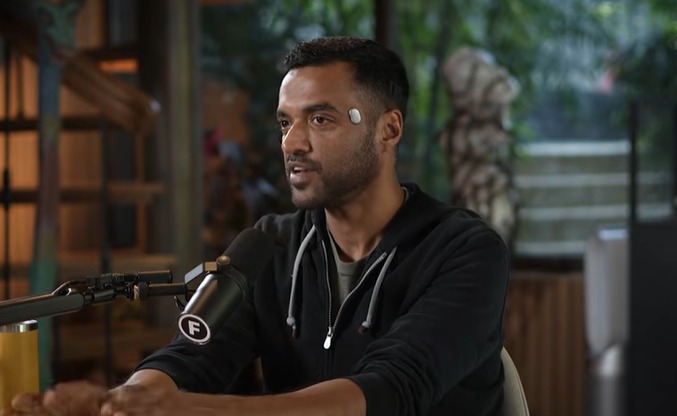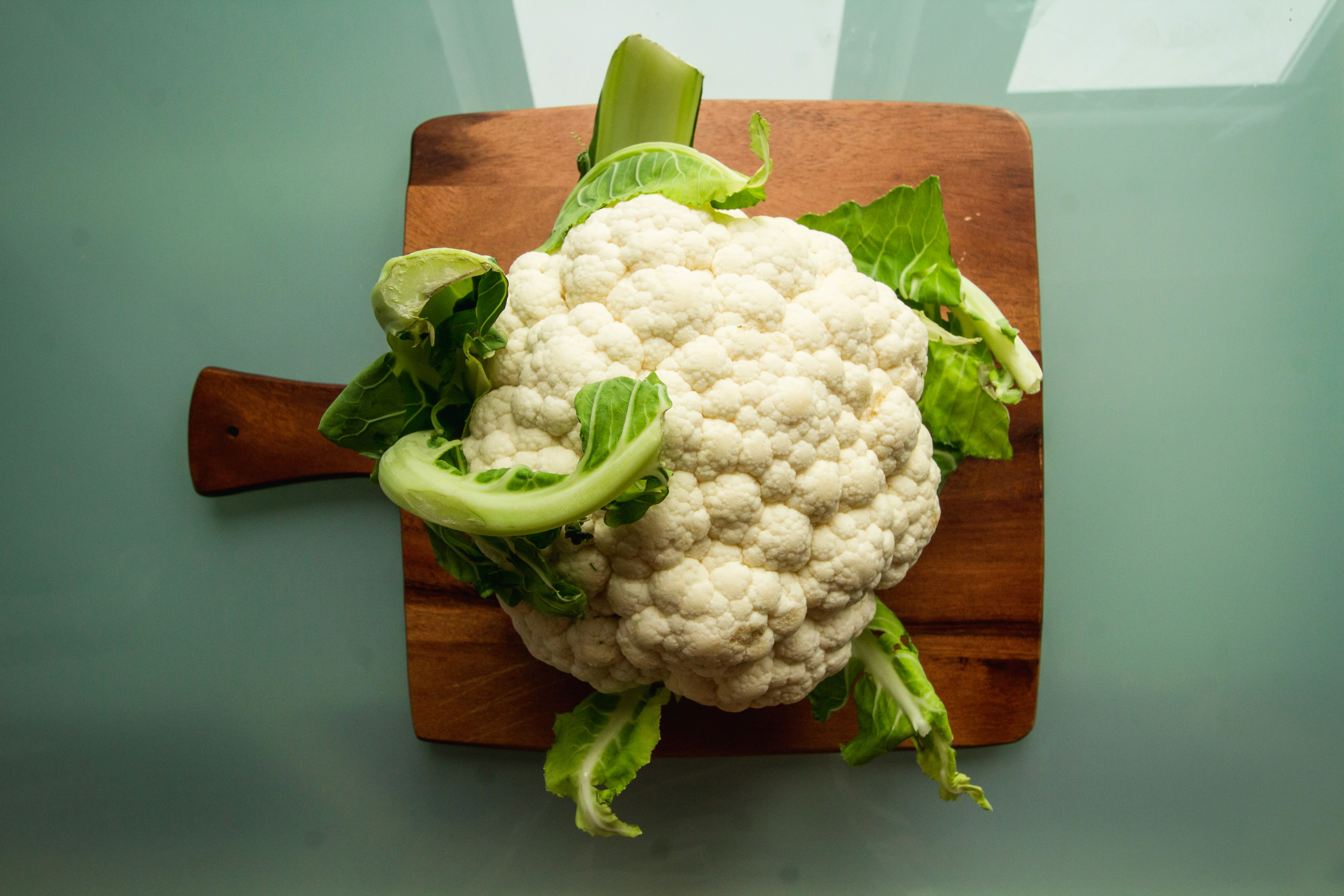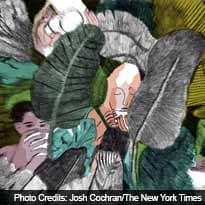On a recent Friday night, a dozen seekers in loosefitting attire, most in their 20s and 30s, climbed a flight of steps of a mixed-used community space in New York City. After arranging yoga mats and blankets on the floor, they each paid $150, listened to a Colombian shaman and his assistant welcome them in Spanish and English, signed a disclaimer, and accepted large plastic takeout-style containers for vomiting.Then, one at a time, each got up to receive a cup of thick brownish liquid with a muddy herbal taste. It was ayahuasca (eye-uh-WAH-skuh) tea, a hallucinogenic brew from the Amazon that they hoped would open them to personal insights through optic and auditory hallucinations.
Once they drank and had settled into their spots, they waited in the darkness with just one candle flickering. The shaman played traditional stringed and wind instruments while chanting ritualistic melodies, some sweet, some guttural.A participant who asked that her name not be used because it might jeopardize her teaching positions at several graduate programs settled in for the all-night journey. She had abstained for several days from alcohol, red meat, spicy foods, aged cheese and television, as prescribed by email. She had not had sex and she was not on antidepressants.
This would be the second time she would participate since February, when she decided to have an ayahuasca experience just a month after her husband, who was Peruvian, had died. She had done it in Lima several years ago and found it meaningful."It's a transitional time for me right now, and I want to stay open," she had said in a phone interview the night before. "I find ayahuasca to be a purifying psychological journey."She's not alone. In a world increasingly dominated by screen time, not dream time, it is not surprising that many people, having binged on yoga and meditation for years, are turning to a more dramatic catalyst for inner growth. But those who swear by ayahuasca's usefulness (many say it's like having 10 years of therapy in a night) also caution that it has to be treated seriously, calling their experiences while under its influence "work" because, in addition to causing them to vomit and sometimes have diarrhea, it can be frightening and challenging to the psyche.And although two religious organizations in the United States are sanctioned to use it legally, the N, N-Dimethyltryptamine (or DMT) in ayahuasca is a Schedule I controlled substance - considered to have no medical use and a high potential for abuse. It is in the same category as ecstasy and heroin."It must be used carefully, but it has a good mind and body connection," said Rick Doblin, founder of the Multidisciplinary Association for Psychedelic Studies in Santa Cruz, California, who has a doctorate in public policy from Harvard University. "You have a sense of inner light in your brain."Or as William S. Burroughs put it in a letter to Allen Ginsberg collected in the book, "The Yage Letters" about his ayahuasca experience in Panama in 1953, "I experienced first a feeling of serene wisdom so that I was quite content to sit there indefinitely."If the proliferation of websites, blogs, books and conferences are any indication, interest of late has been soaring for ayahuasca tea, a mix of two Amazonian plants, one a vine, the other a leaf. Combined, they contain DMT and monoamine oxidase inhibitors, which promote psychedelic visions and euphoria.Following the paths of Paul Simon, Oliver Stone, Tori Amos and Sting (who wrote in his 2005 autobiography, "Broken Music," that it was the only religious experience he ever had), younger musicians like Devendra Banhart, Ben Lee and Father John Misty of the Fleet Foxes are speaking out and creating work about their ayahuasca use in the Amazon or at home.In an interview with L.A. Weekly, which in November put ayahuasca on its cover (calling it "exceedingly trendy" and referencing "ladies at Soho House discussing their transcendental experiences"), Chris Robinson, the lead singer of the Black Crowes and the former husband of Kate Hudson, attributed it to the opening of his mind and heart.And at a 2012 event, Ayahuasca Monologues, Penn Badgley, who made his mark with the less than transcendent "Gossip Girl," called it a "glittering spiritual tool." Jennifer Aniston has a notably inauthentic ayahuasca experience in the 2012 movie "Wanderlust," and it has also shown up on "Weeds" and "Nip/Tuck."Then, in April, to push things into another level of trending, Lindsay Lohan confided on the OWN channel's series about her that she had participated in an ayahuasca cleanse and it was helping with her addiction issues and keeping her sober."I saw my whole life in front of me," she told the camera while putting on thigh high black boots and having her lips done by a makeup man. "And I had to let go of past things." She added that she saw herself die and then being reborn."It was intense," she said.One could imagine a better advocate.Researchers have for years been investigating psychedelics for stopping addiction to everything from cigarettes and alcohol to methamphetamine. Ibogaine (an African bark derivative with psychoactive properties that is banned in the United States) is used for heroin addiction in other countries, including Canada, Mexico and New Zealand. Ayahuasca is under study for similar uses."It's a fascinating compound with a great deal to be learned from its effects," said Dr. Charles Grob, a psychiatrist who is the director of the division of child and adolescent psychiatry at the Harbor-UCLA Medical Center and who helped administer a study in Manaus, Brazil, in the 1990s that linked dramatic positive transformations among alcoholics and drug addicts with ayahuasca use. But along with its positives, Grob is quick to list its dangers."When used with antidepressants it creates an excess of serotonin in the central nervous system, which can cause confusion and tremulousness," he said. "And because it is a stimulant, it can affect cardiovascular function when people have heart issues." There are also risks of adverse effects among people with psychological problems like bipolarity or schizophrenia."It all comes down to preparation and setting," he said. "If the individual is prepared, following medical and dietary restrictions in advance, and is having the experience with a knowledgeable facilitator like a traditional shaman, it is relatively safe."Soaring popularity has been increasing greed and trouble. In Amazonian regions of Brazil and Peru, where ayahuasca is deemed a traditional and legal medicine, tourists flock to partake in ceremonies. Most are conducted at jungle retreats by legitimate medicine men that screen for physical and mental stability and are skilled in handing severe psychological responses.But increasingly, wrote Kelly Hearn in 2013 in Men's Journal, a visit for ayahuasca tourists can become a nightmare, "and some don't go home at all." Inexpertly mixed brews or the use of another more dangerous plant, toe, have contributed to bad reactions, as well as poor screening for medical issues. There have been cases of sexual molestation, too.In the United States, perhaps because of the secrecy surrounding ayahuasca use and the law, there have been no negative reports. But ayahuasca made the news in 2006 when a Supreme Court ruling deemed its use legal as a tea for religious purposes. A group based in New Mexico with Brazilian roots called Centro Espírita Beneficente União do Vegetal, commonly known as UDV, had won its case. (The 9th U.S. Circuit Court of Appeals also sanctioned another religious organization with Brazilian roots, Santo Daime, to use ayahuasca.)Jeffrey Bronfman, whose family once controlled Seagram Co., is national vice president of the UDV church. "The tea really is an instrument to help us get in touch with our own spiritual nature," he told National Public Radio last year.Several years ago, Doblin of the Multidisciplinary Association of Psychedelic Studies attended a ceremony at the UDV church in Santa Fe, New Mexico. The intense ritualistic singing prompted him to think about his own inability to sing and lack of emotional connection. He went home to the Boston area, took voice lessons and started sharing lullabies with his children."I felt such relief when I finally sang to them," he said.Stories of transcendence and psychological advancement triggered by ayahuasca are a regular part of the conversation. But if visions are achieved that psychologists link to the collective unconscious, they are made useful only with rigorous interpretation upon waking.
Abby Aguirre, reporting for Marie Claire in February, described a hairdresser in her group in California using ayahuasca for addiction problems and an actress who found it helped her get over a romantic breakup by suggesting that her ex-boyfriend didn't matter anymore."It's as though a lens has been dropped over my vision, giving me heightened self-awareness and emotional intelligence," she wrote of her own experience. The outcome? A realization that the extensive to-do lists she carries are an absurd manifestation of anxiety.If it sounds banal to an outsider, for her, as for many others, the takeaway is profound. One fashion insider hallucinated a snake coming toward her that she perceived as representing a difficult work colleague and found herself saying, "I won't harm you," which reduced the threat's size. Dr. Eduardo Gastelumendi, a psychiatrist in Lima, Peru, recalled hearing from a patient who had a troubled and distant relationship with his father. He hallucinated hugging him. A few days later, he knocked on his father's door, threw his arms around him and they reconciled in tears."It opened a transformative experience for him," said Gastelumendi, who is also a psychoanalyst. "With ayahuasca, empathy is enhanced and you see things in a different light."In the ayahuasca ceremony in New York, after taking a second dose of the brew and regurgitating violently (commonly referred to as a purge), the woman who had recently lost her husband was starting to see things."It was like a collage or jigsaw puzzle of words that was bright as an LED display in Times Square," she recalled the next day. "It was very beautiful, but the only words I could decipher in all of it were 'Enjoy life.'" She thought it might be a message from her late husband.
Not long after that, the shaman and his assistant awakened her and the rest of the group, including a young couple with a baby, to the light of morning. The woman got a ritual hug, a ceremonial brushing with a frond from the jungle, ate the healthy foods people had brought, and listened to and shared hallucinatory experiences. A man in the group seemed unmoored as he talked about his discovery on this evening that everything written on paper is a lie. Others shared gentler visions and insights. Then, with two friends she had brought along, the woman left to drive home.One of her friends wasn't so sure of what she had just experienced.
"It was cool, but what did I learn from it?" she asked.© 2014 New York Times News Service
Once they drank and had settled into their spots, they waited in the darkness with just one candle flickering. The shaman played traditional stringed and wind instruments while chanting ritualistic melodies, some sweet, some guttural.A participant who asked that her name not be used because it might jeopardize her teaching positions at several graduate programs settled in for the all-night journey. She had abstained for several days from alcohol, red meat, spicy foods, aged cheese and television, as prescribed by email. She had not had sex and she was not on antidepressants.
This would be the second time she would participate since February, when she decided to have an ayahuasca experience just a month after her husband, who was Peruvian, had died. She had done it in Lima several years ago and found it meaningful."It's a transitional time for me right now, and I want to stay open," she had said in a phone interview the night before. "I find ayahuasca to be a purifying psychological journey."She's not alone. In a world increasingly dominated by screen time, not dream time, it is not surprising that many people, having binged on yoga and meditation for years, are turning to a more dramatic catalyst for inner growth. But those who swear by ayahuasca's usefulness (many say it's like having 10 years of therapy in a night) also caution that it has to be treated seriously, calling their experiences while under its influence "work" because, in addition to causing them to vomit and sometimes have diarrhea, it can be frightening and challenging to the psyche.And although two religious organizations in the United States are sanctioned to use it legally, the N, N-Dimethyltryptamine (or DMT) in ayahuasca is a Schedule I controlled substance - considered to have no medical use and a high potential for abuse. It is in the same category as ecstasy and heroin."It must be used carefully, but it has a good mind and body connection," said Rick Doblin, founder of the Multidisciplinary Association for Psychedelic Studies in Santa Cruz, California, who has a doctorate in public policy from Harvard University. "You have a sense of inner light in your brain."Or as William S. Burroughs put it in a letter to Allen Ginsberg collected in the book, "The Yage Letters" about his ayahuasca experience in Panama in 1953, "I experienced first a feeling of serene wisdom so that I was quite content to sit there indefinitely."If the proliferation of websites, blogs, books and conferences are any indication, interest of late has been soaring for ayahuasca tea, a mix of two Amazonian plants, one a vine, the other a leaf. Combined, they contain DMT and monoamine oxidase inhibitors, which promote psychedelic visions and euphoria.Following the paths of Paul Simon, Oliver Stone, Tori Amos and Sting (who wrote in his 2005 autobiography, "Broken Music," that it was the only religious experience he ever had), younger musicians like Devendra Banhart, Ben Lee and Father John Misty of the Fleet Foxes are speaking out and creating work about their ayahuasca use in the Amazon or at home.In an interview with L.A. Weekly, which in November put ayahuasca on its cover (calling it "exceedingly trendy" and referencing "ladies at Soho House discussing their transcendental experiences"), Chris Robinson, the lead singer of the Black Crowes and the former husband of Kate Hudson, attributed it to the opening of his mind and heart.And at a 2012 event, Ayahuasca Monologues, Penn Badgley, who made his mark with the less than transcendent "Gossip Girl," called it a "glittering spiritual tool." Jennifer Aniston has a notably inauthentic ayahuasca experience in the 2012 movie "Wanderlust," and it has also shown up on "Weeds" and "Nip/Tuck."Then, in April, to push things into another level of trending, Lindsay Lohan confided on the OWN channel's series about her that she had participated in an ayahuasca cleanse and it was helping with her addiction issues and keeping her sober."I saw my whole life in front of me," she told the camera while putting on thigh high black boots and having her lips done by a makeup man. "And I had to let go of past things." She added that she saw herself die and then being reborn."It was intense," she said.One could imagine a better advocate.Researchers have for years been investigating psychedelics for stopping addiction to everything from cigarettes and alcohol to methamphetamine. Ibogaine (an African bark derivative with psychoactive properties that is banned in the United States) is used for heroin addiction in other countries, including Canada, Mexico and New Zealand. Ayahuasca is under study for similar uses."It's a fascinating compound with a great deal to be learned from its effects," said Dr. Charles Grob, a psychiatrist who is the director of the division of child and adolescent psychiatry at the Harbor-UCLA Medical Center and who helped administer a study in Manaus, Brazil, in the 1990s that linked dramatic positive transformations among alcoholics and drug addicts with ayahuasca use. But along with its positives, Grob is quick to list its dangers."When used with antidepressants it creates an excess of serotonin in the central nervous system, which can cause confusion and tremulousness," he said. "And because it is a stimulant, it can affect cardiovascular function when people have heart issues." There are also risks of adverse effects among people with psychological problems like bipolarity or schizophrenia."It all comes down to preparation and setting," he said. "If the individual is prepared, following medical and dietary restrictions in advance, and is having the experience with a knowledgeable facilitator like a traditional shaman, it is relatively safe."Soaring popularity has been increasing greed and trouble. In Amazonian regions of Brazil and Peru, where ayahuasca is deemed a traditional and legal medicine, tourists flock to partake in ceremonies. Most are conducted at jungle retreats by legitimate medicine men that screen for physical and mental stability and are skilled in handing severe psychological responses.But increasingly, wrote Kelly Hearn in 2013 in Men's Journal, a visit for ayahuasca tourists can become a nightmare, "and some don't go home at all." Inexpertly mixed brews or the use of another more dangerous plant, toe, have contributed to bad reactions, as well as poor screening for medical issues. There have been cases of sexual molestation, too.In the United States, perhaps because of the secrecy surrounding ayahuasca use and the law, there have been no negative reports. But ayahuasca made the news in 2006 when a Supreme Court ruling deemed its use legal as a tea for religious purposes. A group based in New Mexico with Brazilian roots called Centro Espírita Beneficente União do Vegetal, commonly known as UDV, had won its case. (The 9th U.S. Circuit Court of Appeals also sanctioned another religious organization with Brazilian roots, Santo Daime, to use ayahuasca.)Jeffrey Bronfman, whose family once controlled Seagram Co., is national vice president of the UDV church. "The tea really is an instrument to help us get in touch with our own spiritual nature," he told National Public Radio last year.Several years ago, Doblin of the Multidisciplinary Association of Psychedelic Studies attended a ceremony at the UDV church in Santa Fe, New Mexico. The intense ritualistic singing prompted him to think about his own inability to sing and lack of emotional connection. He went home to the Boston area, took voice lessons and started sharing lullabies with his children."I felt such relief when I finally sang to them," he said.Stories of transcendence and psychological advancement triggered by ayahuasca are a regular part of the conversation. But if visions are achieved that psychologists link to the collective unconscious, they are made useful only with rigorous interpretation upon waking.
Abby Aguirre, reporting for Marie Claire in February, described a hairdresser in her group in California using ayahuasca for addiction problems and an actress who found it helped her get over a romantic breakup by suggesting that her ex-boyfriend didn't matter anymore."It's as though a lens has been dropped over my vision, giving me heightened self-awareness and emotional intelligence," she wrote of her own experience. The outcome? A realization that the extensive to-do lists she carries are an absurd manifestation of anxiety.If it sounds banal to an outsider, for her, as for many others, the takeaway is profound. One fashion insider hallucinated a snake coming toward her that she perceived as representing a difficult work colleague and found herself saying, "I won't harm you," which reduced the threat's size. Dr. Eduardo Gastelumendi, a psychiatrist in Lima, Peru, recalled hearing from a patient who had a troubled and distant relationship with his father. He hallucinated hugging him. A few days later, he knocked on his father's door, threw his arms around him and they reconciled in tears."It opened a transformative experience for him," said Gastelumendi, who is also a psychoanalyst. "With ayahuasca, empathy is enhanced and you see things in a different light."In the ayahuasca ceremony in New York, after taking a second dose of the brew and regurgitating violently (commonly referred to as a purge), the woman who had recently lost her husband was starting to see things."It was like a collage or jigsaw puzzle of words that was bright as an LED display in Times Square," she recalled the next day. "It was very beautiful, but the only words I could decipher in all of it were 'Enjoy life.'" She thought it might be a message from her late husband.
Not long after that, the shaman and his assistant awakened her and the rest of the group, including a young couple with a baby, to the light of morning. The woman got a ritual hug, a ceremonial brushing with a frond from the jungle, ate the healthy foods people had brought, and listened to and shared hallucinatory experiences. A man in the group seemed unmoored as he talked about his discovery on this evening that everything written on paper is a lie. Others shared gentler visions and insights. Then, with two friends she had brought along, the woman left to drive home.One of her friends wasn't so sure of what she had just experienced.
"It was cool, but what did I learn from it?" she asked.© 2014 New York Times News Service
Advertisement










